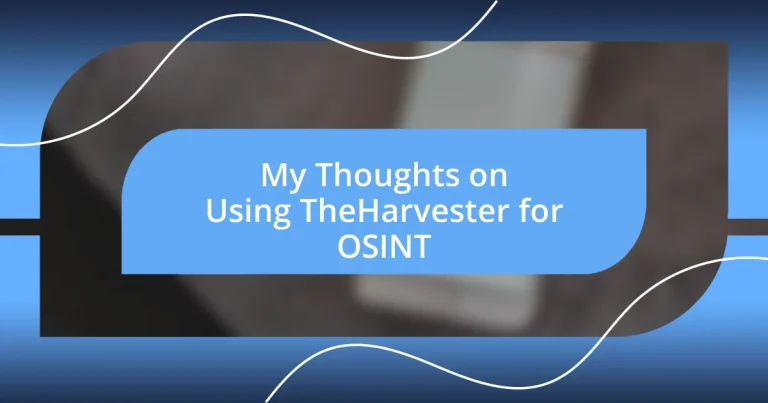Key takeaways:
- TheHarvester is an OSINT tool that efficiently aggregates data from various sources, enabling users to gather comprehensive information about domains and associated email addresses.
- Setting up TheHarvester is straightforward, requiring basic knowledge of Python and Git, and effective use depends on clear objectives and organizational strategies.
- While powerful, TheHarvester has limitations, including reliance on public data and potential information overload, emphasizing the importance of context when interpreting results.
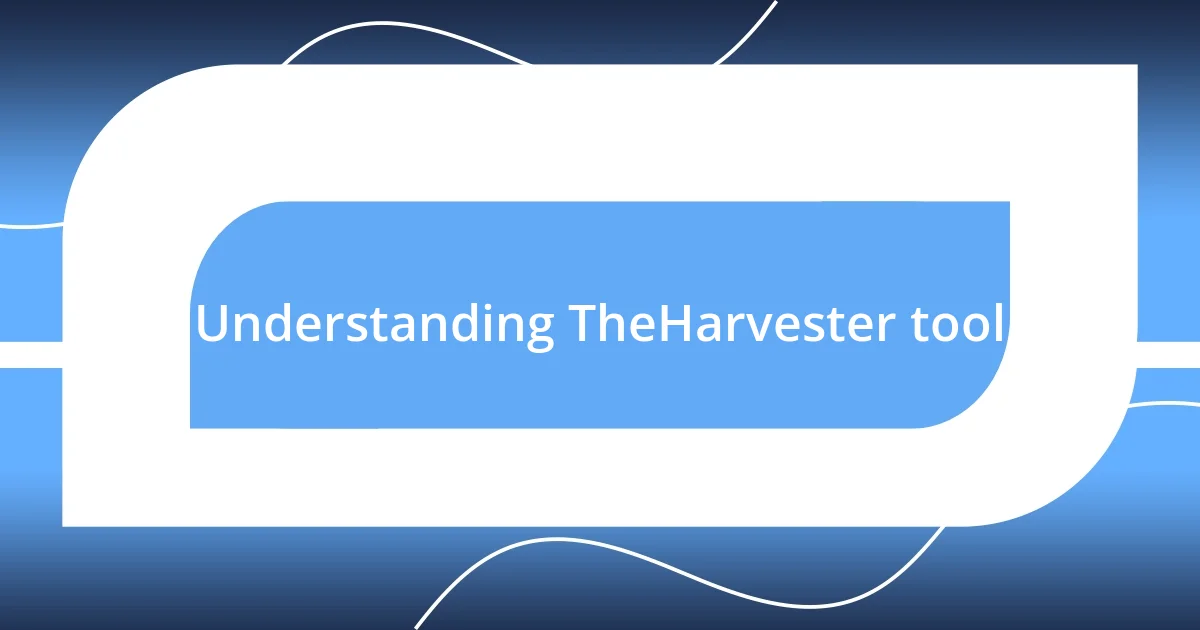
Understanding TheHarvester tool
TheHarvester is a powerful open-source intelligence (OSINT) tool primarily designed for gathering information about domains and their associated email addresses. I remember the first time I used it; there was this thrill in uncovering data that felt almost like being a digital detective. Isn’t it fascinating how just a few commands can yield so much valuable information?
When I first delved into TheHarvester, I was struck by its versatility; it can pull data from various sources like search engines, social networks, and even public databases. Have you ever wondered how much information is out there, just waiting to be discovered? It’s astonishing to think that with the right tools, you can access public details that can reveal a lot about an individual or organization.
One of the most appealing aspects of TheHarvester is its ability to help users paint a comprehensive picture of their targets. I recall using it in a project to gather intel for a security assessment; the results were eye-opening. In a world where information is power, wouldn’t it be great to harness such tools responsibly? Understanding how to use TheHarvester effectively can truly enhance your OSINT capabilities.
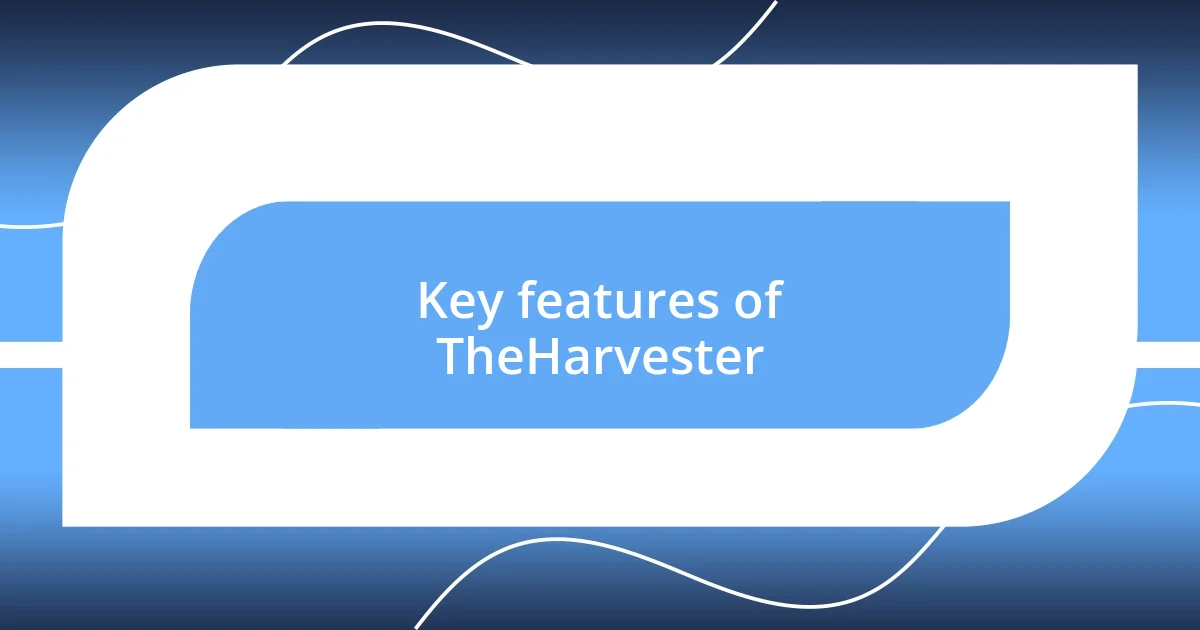
Key features of TheHarvester
TheHarvester is packed with features that make information gathering both efficient and effective. What stands out to me is how it can scrape data not just from search engines, but also from various online platforms. I’ve found that this multifaceted approach allows me to construct a much clearer picture of my target. It’s like piecing together a puzzle, where every small bit of information adds context.
Key features of TheHarvester include:
- Multiple Data Sources: It aggregates data from search engines like Google, Bing, and also social media aggregators.
- Email Address Collection: The tool specializes in extracting email addresses associated with a domain, which can be invaluable for phishing simulations or vulnerability assessments.
- Host and Subdomain Discovery: TheHarvester helps locate all associated domain names, giving insights into potential attack vectors.
- Support for Various Output Formats: You can save the gathered information in formats such as CSV or JSON, making it easy to analyze later.
- API Integration: I appreciate how it can connect with different APIs, allowing for tailored data collection — this makes it ideal for specialized research.
I remember a project where I was tasked with identifying potential security threats for a client. Using TheHarvester, I managed to unearth email addresses and subdomains that the client wasn’t even aware of. Each new piece of information felt like uncovering a hidden layer of their digital presence, revealing both strengths and vulnerabilities. It’s moments like these that emphasize how crucial the right tools are in today’s digital landscape.
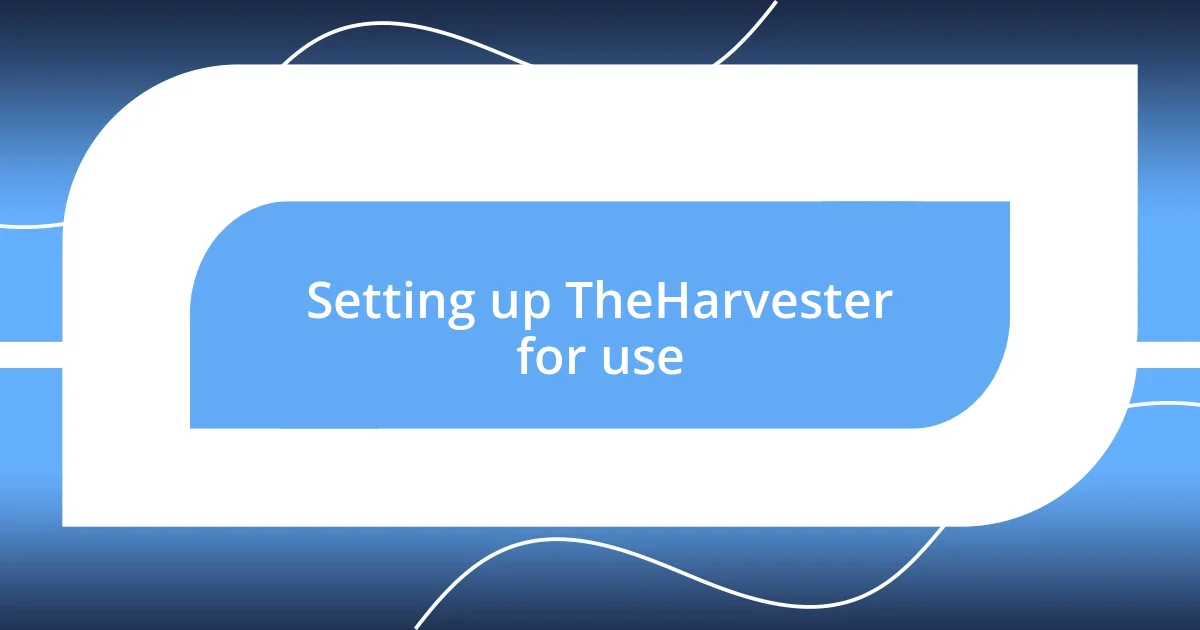
Setting up TheHarvester for use
Setting up TheHarvester for use isn’t as daunting as it seems. First, you need to ensure that your environment meets the tool’s prerequisites, which usually include Python and various libraries. When I configured it for the first time, it felt like setting up a new gadget at home — a mix of excitement and a touch of apprehension. I remember checking dependencies while sipping coffee, hoping everything would smoothly fall into place.
Next, you’ll want to download TheHarvester from its official repository, which is straightforward if you’re familiar with Git. I still recall the engaged feeling of snagging the latest version; it felt like downloading a treasure map loaded with possibilities. After cloning the repo, a little time spent on customization, like setting up the API keys for extra data sources, pays off in leaps down the line.
Lastly, I recommend diving into the command-line interface, as that’s where the magic happens. Initially, I was intimidated by the terminal, but once I started executing simple commands, it felt like unlocking secret doors. The immediate feedback from the results was exhilarating and made me eager to input more complex queries. Here’s a simple comparison of different versions and installation methods:
| Method | Requirements |
|---|---|
| Manual Installation | Python, Git |
| Using Package Manager | Python Installed |
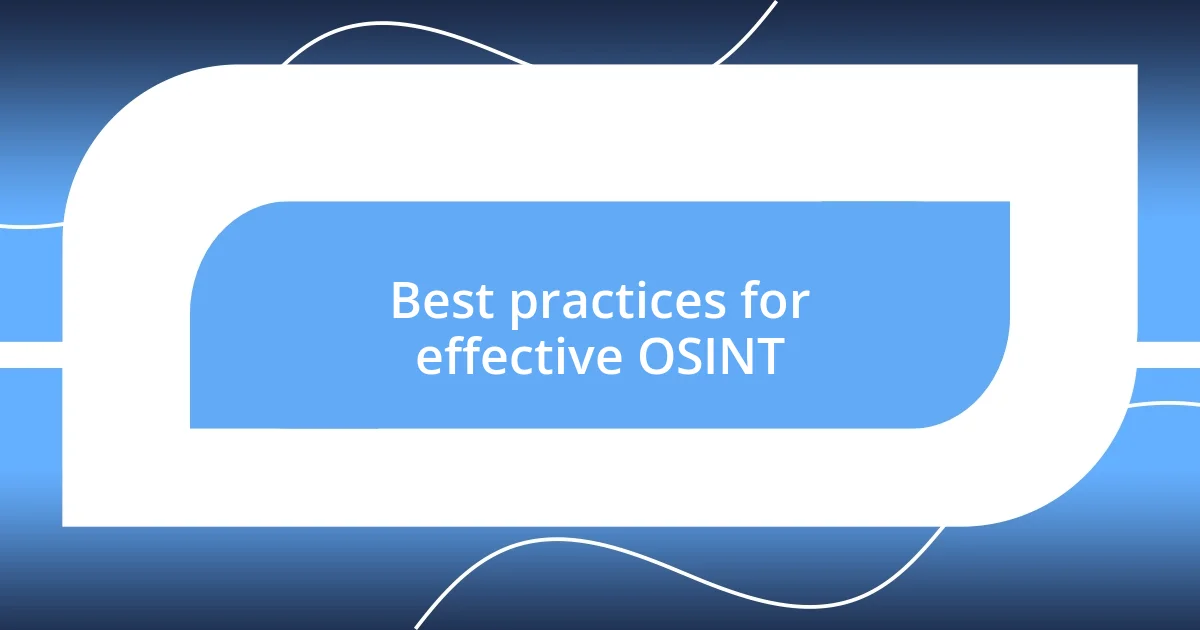
Best practices for effective OSINT
Effective OSINT relies heavily on meticulous organization and strategy. I often find that mapping out my goals before diving into the data collection process saves me a lot of time. It’s like planning a road trip; knowing your destination helps you choose the right routes, resulting in a smoother journey.
Another best practice I have encountered is the importance of validating sources. There have been instances where I got excited about a potential lead only to discover it was based on unreliable information. Cross-referencing data from multiple reputable sources not only boosts confidence in the findings but also ensures the accuracy of insights, creating a more robust understanding of the target.
Lastly, I’ve learned that documenting my findings is as crucial as the initial data gathering. Whether I’m jotting down notes by hand or creating a structured spreadsheet, this habit has saved me countless hours in the long run. Can you imagine stumbling upon valuable insights only to forget them later? Keeping detailed records allows me to track patterns and revisit connections that might not be apparent initially, enriching my overall analysis.
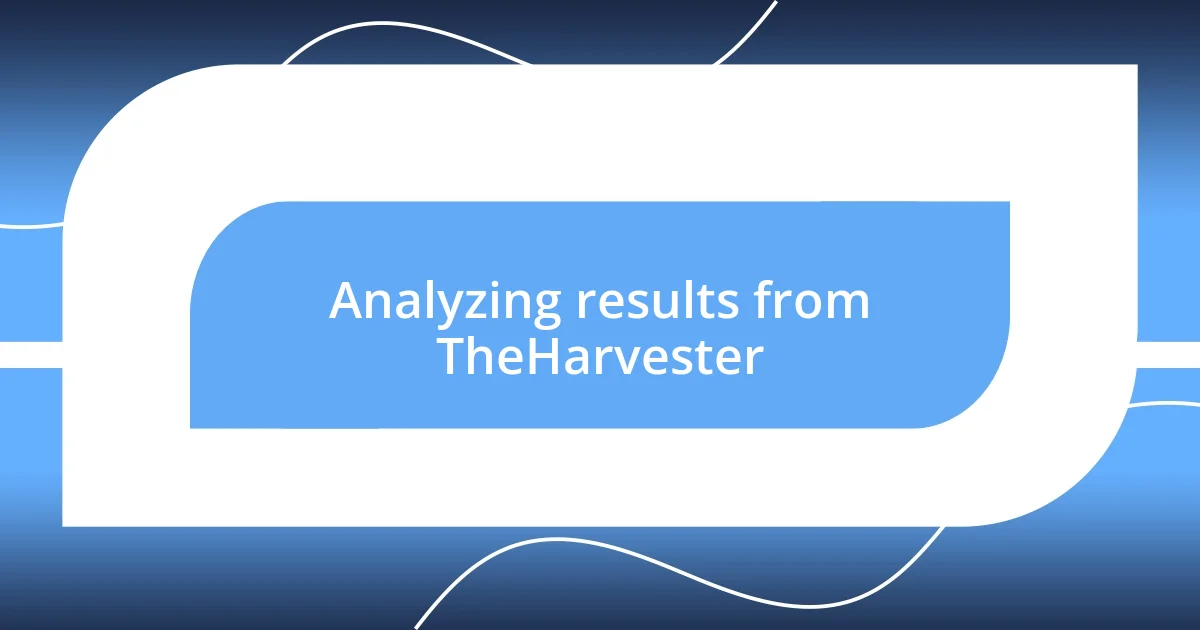
Analyzing results from TheHarvester
When you start analyzing the results from TheHarvester, it can feel overwhelming due to the sheer volume of data. I recall my first attempt – I was greeted with a flood of emails, domain names, and social media accounts, which almost felt like standing in front of a chaotic library. It’s essential to take a moment to sift through this information methodically; I often categorize the results based on relevance and credibility. How do I decide what to focus on? I usually look for patterns or repeated entries that might indicate a more significant connection.
Digging deeper into the results often reveals gems that might not be immediately apparent. I remember one particular case where a seemingly innocuous email address led me to an entire network of subsidiaries under a larger corporation. It was like peeling back the layers of an onion; with each layer, I learned more about the connections at play. I always find it beneficial to keep a keen eye on context, as this can drastically change the interpretation of data. What might seem irrelevant at first could turn out to be a key piece of the puzzle.
To make the most out of my findings, I utilize visualization tools to represent the data. When I first started mapping out relationships, it was simply invigorating to see everything laid out visually. Have you ever felt that rush when a complex idea suddenly clicks into place? That’s how I feel when I connect the dots using graphs and charts, which not only helps me understand the data better but also presents it in a way that’s easily digestible for others. Engaging with the results in this manner transforms raw data into actionable insights.
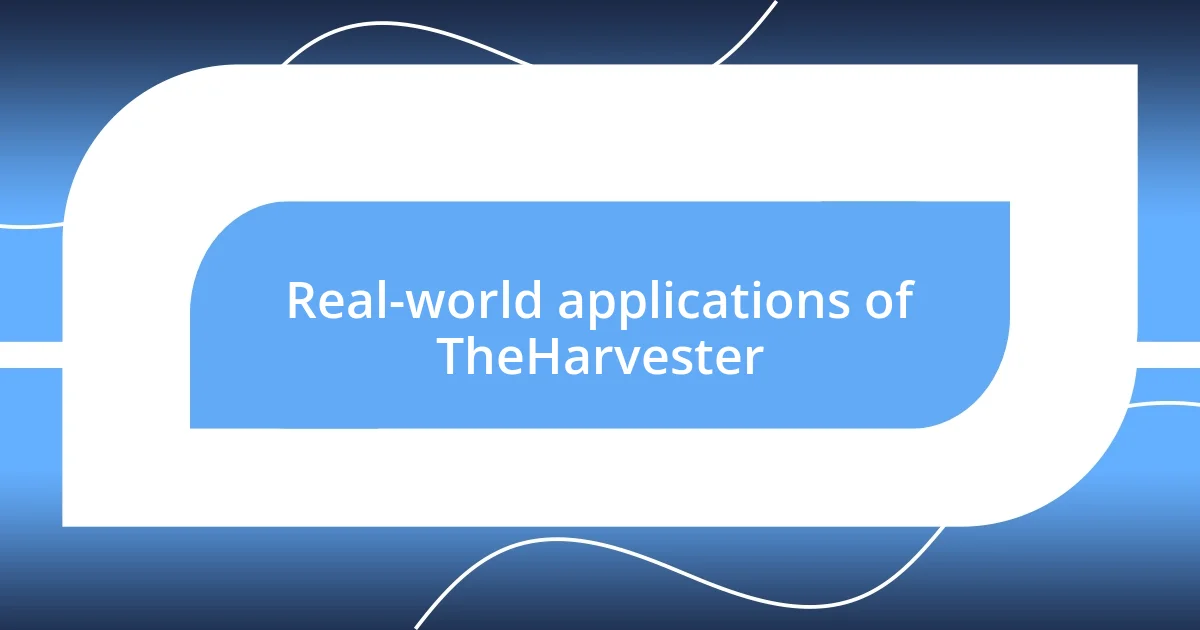
Real-world applications of TheHarvester
TheHarvester has several fascinating real-world applications that can significantly enhance your OSINT efforts. For instance, during a recent engagement with a client, I used TheHarvester to compile all publicly available data on their competitors. This exercise not only revealed contact information and social media accounts but also identified potential vulnerabilities in their digital presence. It’s often said that knowledge is power, and in this case, it provided my client with strategic insights that informed their marketing approach.
In another instance, I applied TheHarvester to support a cybersecurity assessment. After inputting the target domain, I was astonished by how quickly it uncovered subdomains and associated IP addresses. Each discovery was like opening a door to a room filled with critical data, sparking my curiosity and leading to deeper investigative avenues. I can’t help but wonder—what critical insights are hidden in plain sight, waiting for someone to dig a little deeper?
In a more personal context, I remember using TheHarvester for a community project aimed at understanding local businesses’ digital footprints. It became evident how this tool not only served as a way to gather information but also fostered connections between local entrepreneurs who were unaware of each other’s digital presence. It was a thrilling moment when a simple search turned into a collaborative effort, showing how OSINT can promote community engagement. Don’t you think such discoveries can reshape perception and spark innovation?
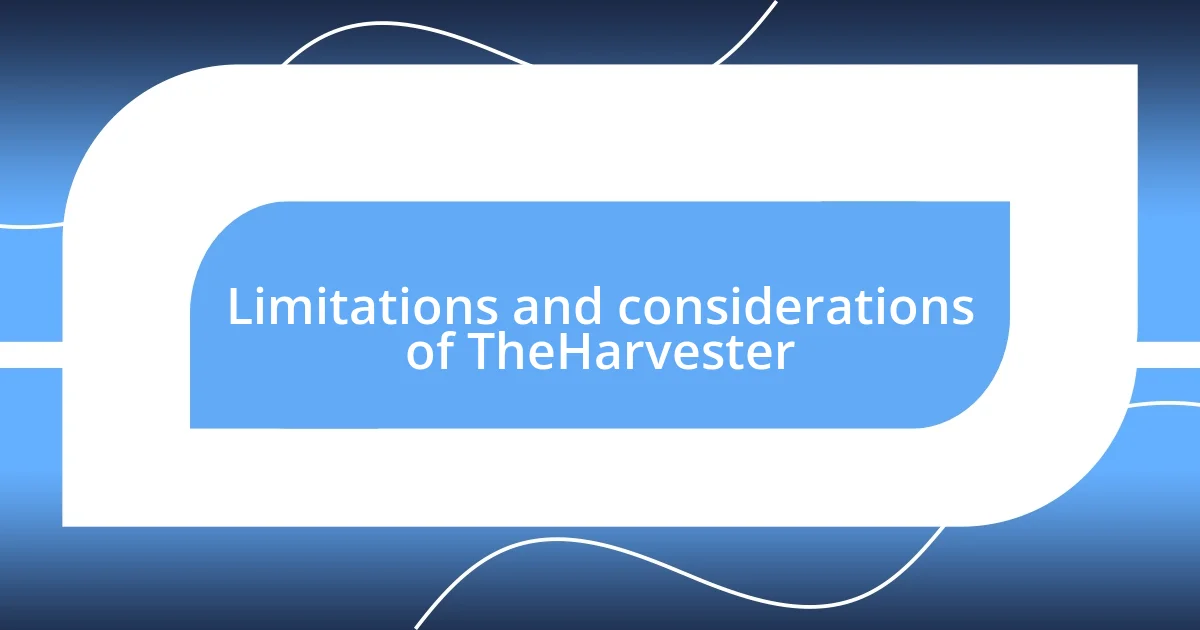
Limitations and considerations of TheHarvester
TheHarvester is a powerful tool, but it does come with limitations that any user should consider. For instance, its reliance on publicly available data means that you may miss out on vital information that’s behind privacy settings or restricted access. I remember feeling frustrated when I discovered that some key profiles I was investigating had limited visibility due to privacy settings, making it challenging to connect the dots.
Another limitation is the potential for overwhelming results that can cloud your judgment. I’ve experienced moments where the tool spits out so much data that I felt paralyzed, unsure of where to start. It taught me the importance of setting clear objectives before running a search. Therefore, asking myself targeted questions can help focus my efforts and filter out irrelevant data right from the start. How do you determine which leads are worth pursuing?
Finally, we must remember that context is critical when interpreting TheHarvester’s results. I once encountered a situation with multiple email addresses linked to the same domain—some were for outreach, while others were spam accounts. This nuanced understanding is crucial; without it, you might waste resources on pursuing dead ends. Recognizing the limitations of the data at hand allows me to make more informed decisions moving forward. Have you found that understanding context enhances your investigations?












